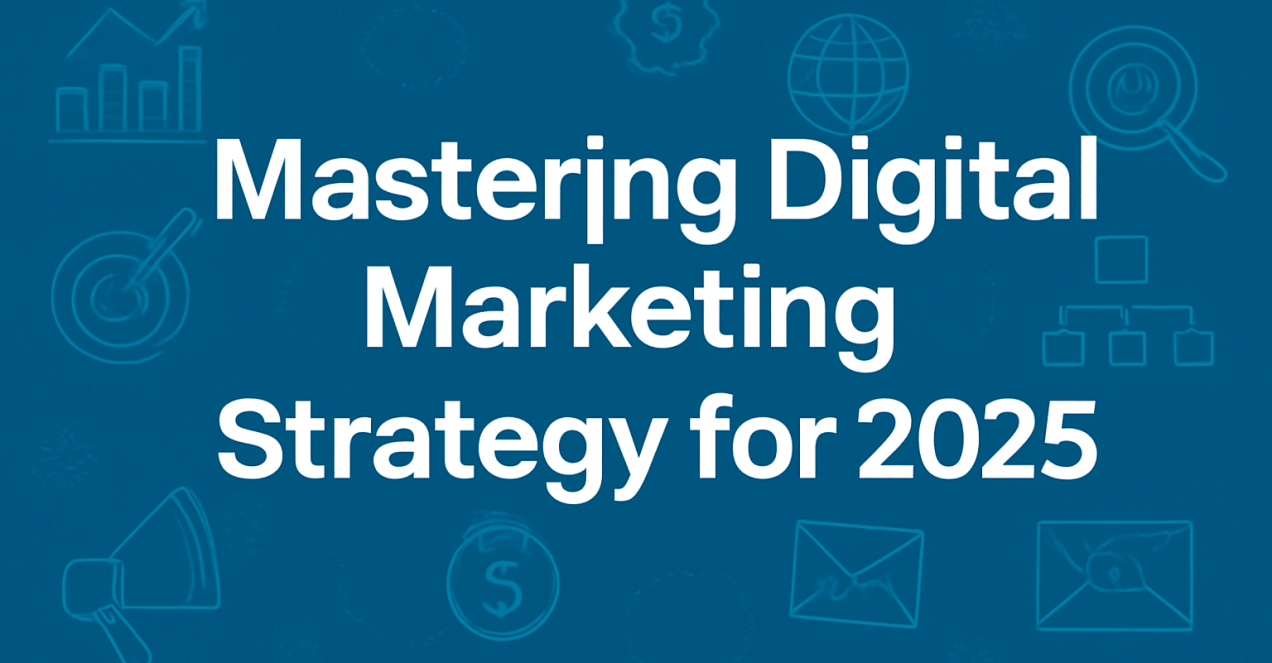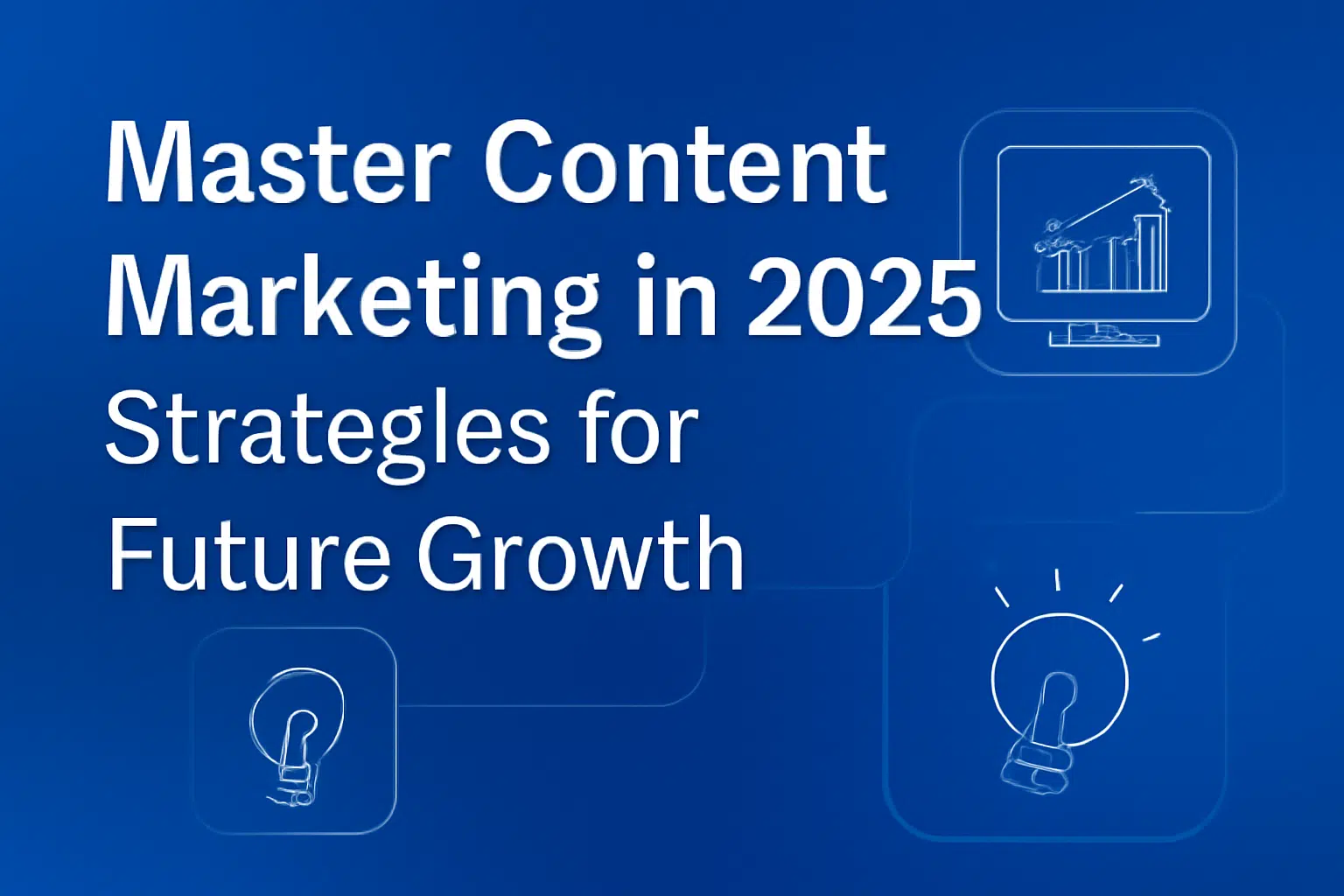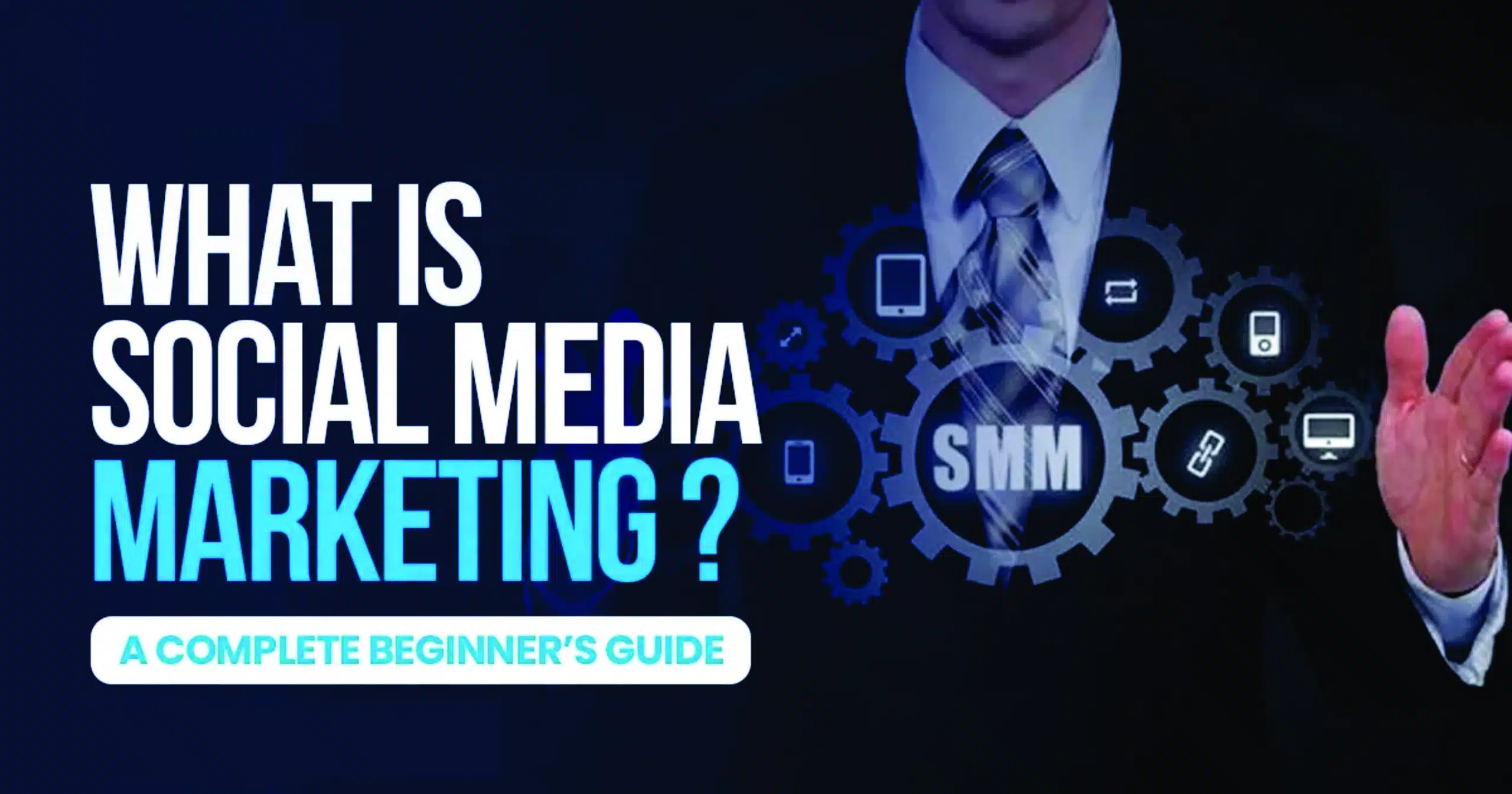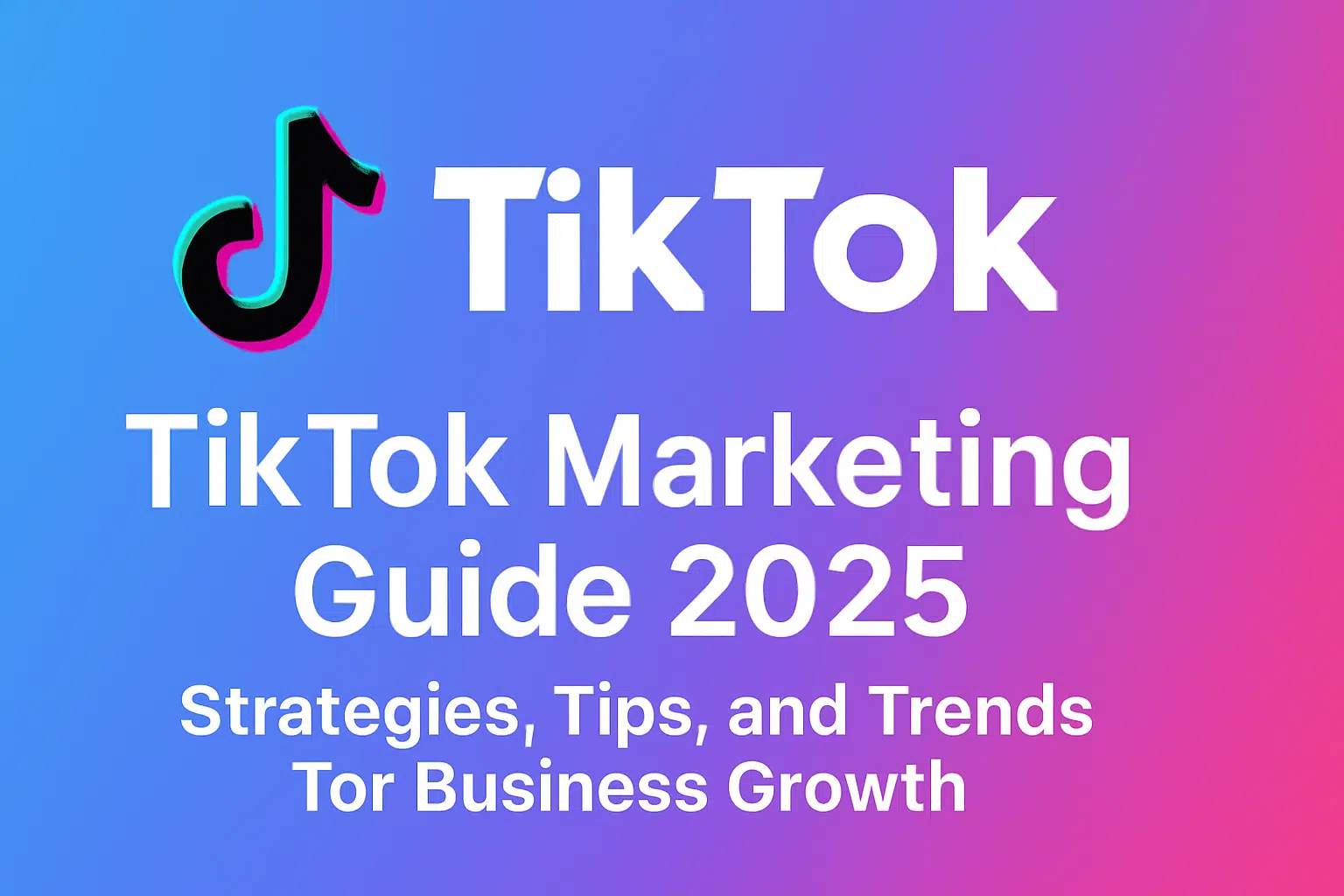

The digital landscape evolves rapidly. New technologies, shifting consumer behaviors, and emerging trends are constantly changing the way we do business online. The question is: Are you simply reacting to these changes as they happen, or are you building a future-proof strategy that adapts, grows, and thrives as the digital world continues to evolve?
This guide is designed to provide you with a holistic blueprint for creating an integrated digital marketing strategy in 2025. We will go beyond the traditional isolated tactics of SEO, social media, and content marketing. Instead, we will show you how to bring these elements together into a cohesive framework—one that fosters sustainable business growth and positions your brand for long-term success.
What you will learn in this guide:
With a comprehensive and actionable approach, this guide will empower you to create a marketing strategy that not only adapts to current trends but stays ahead of the curve, enabling your business to thrive in 2025 and beyond.
Why is an Integrated Digital Marketing Strategy Crucial for 2025
Why Isolated Tactics Fail
In the fast-paced world of digital marketing, it’s easy to feel overwhelmed by the sheer number of digital channels available: SEO, PPC, social media, email marketing, content marketing, and more. While each of these channels has its own merits, using them in isolation often leads to fragmented marketing efforts that fail to connect.
Challenge: When businesses rely on separate, uncoordinated tactics, they often waste resources, as each channel operates in a silo, without a unified strategy.
Consequence: The results of such fragmentation can be severe:
Research-Based Statistic: According to recent studies, businesses with an integrated marketing strategy achieve up to 30% higher ROI than those with fragmented or siloed marketing efforts. (Note: Specific statistic to be sourced by writer)
The Power of Synergy: More Than the Sum of Its Parts
An integrated strategy leverages the power of synergy, where different marketing channels amplify each other, creating a greater impact than any single tactic could achieve on its own.
By aligning your marketing efforts across these channels, you create a consistent customer journey. Customers move seamlessly through multiple touchpoints, from discovering your brand on social media to engaging with your content and finally making a purchase.
An integrated strategy doesn’t just connect channels – it requires a deep understanding of each channel’s mechanics and how they work together. Building such a strategy takes expertise in each digital marketing discipline, ensuring each touchpoint is optimized to lead to the next.
The Core Pillars of a 2025 Digital Marketing Blueprint
Building a comprehensive digital marketing strategy in 2025 involves more than just understanding your channels. It requires a strategic approach to audience targeting, conversion, and measurement. Here’s how to build a resilient and effective strategy:
The foundation of any marketing strategy starts with understanding who you’re talking to and what the landscape looks like. Use data-driven insights to segment your audience based on behavior, demographics, and interests. Knowing your audience is essential for crafting personalized campaigns that resonate.
Your digital home base is your website or e-commerce platform. It must be optimized for user experience, speed, mobile responsiveness, and SEO. In 2025, your website must be ready to serve as a conversion machine that nurtures lead from the moment they arrive.
Generating the right kind of traffic to your online assets requires a multi-channel approach. Utilize SEO, content marketing, social media, and paid advertising to bring in relevant visitors. Every tactic must be optimized for driving quality traffic that aligns with your business goals.
Converting visitors into leads and customers requires strategically placed CTAs (calls to action), lead magnets, and clear conversion paths. Use email marketing, remarketing, and personalized offers to nurture leads into long-term customers.
An integrated strategy is only as good as the data behind it. Continuous monitoring of key metrics (traffic, conversions, engagement, etc.) is essential for understanding how well your efforts are performing. Use tools like Google Analytics, social media insights, and CRM data to optimize and improve campaigns in real-time.
By focusing on these core pillars, you’ll create a strategy that not only integrates various digital marketing channels but also builds a solid foundation for long-term, sustainable business growth in 2025.
Phase 1: Foundation & Strategic Planning
In the early stages of your digital marketing strategy, solid foundation and strategic planning are essential to ensure your marketing efforts align with your overall business goals. Phase 1 focuses on clearly defining your goals, understanding your audience, and analyzing the competitive landscape. This planning sets the stage for effective execution and measurable success.
Defining Your Digital Marketing Goals & KPIs
The first step to building a successful digital marketing strategy is to define clear goals that align with your broader business objectives. Without these goals, your efforts will lack direction, and measuring success becomes impossible.
Aligning Marketing Goals with Business Objectives:
Whether your focus is on brand awareness, lead generation, sales, or customer retention, your digital marketing goals must directly contribute to the overall growth of your business.
Example goals could include:
Setting SMART KPIs:
In-Depth Audience Research & Persona Development
Understanding your ideal customer is the cornerstone of a successful digital marketing strategy. You need to know who they are, what they want, and how they behave online to craft personalized campaigns that resonate with them.
Understanding Your Ideal Customer:
Methods:
Tool Recommendation:
Differentiation Opportunity:
Competitive Analysis: Benchmarking & Identifying Gaps
To succeed in a competitive market, you need to know not just who your audience is, but also how your competitors are engaging them. Competitive analysis helps you uncover opportunities to differentiate your brand and improve your digital marketing efforts.
Analyzing Competitor Digital Strategies:
Identifying Their Strengths, Weaknesses, and Opportunities:
Summary of Phase 1: Foundation & Strategic Planning
Phase 1 is all about building the foundation for a successful digital marketing strategy. By clearly defining your goals, understanding your audience, and analyzing your competition, you lay the groundwork for creating an integrated strategy that drives growth. These steps provide clarity and focus, ensuring that your marketing efforts are aligned with your business objectives, customer needs, and market opportunities.
Phase 2: Building Your Online Presence
Building a robust and professional online presence is crucial for the long-term success of your digital marketing strategy. In Phase 2, we’ll focus on the essentials of establishing your website, e-commerce platform, and content strategy, ensuring that each element is designed to drive growth, enhance user experience, and build brand authority.
Website as Your Digital Hub: Performance & User Experience
Your website is the digital foundation for your business, and it needs to be fast, user-friendly, and secure to thrive in 2025. A website that performs well on all devices and provides a seamless user experience (UX) will be a key driver of online success.
Importance of a Fast, Mobile-Responsive, and Secure Website:
User Experience (UX) & User Interface (UI) Best Practices for 2025:
For more in-depth guidance on creating a high-performing site, check out Mastering WordPress in 2025: The Complete Guide to Building & Managing Sites Like a Pro.
E-commerce Foundations: Beyond Just a Storefront
Your e-commerce store should be much more than a digital marketplace—it must be optimized for conversions from the moment it’s set up. A strong e-commerce foundation ensures you’re not only attracting visitors but also driving sales and building trust with your customers.
Setting Up Your Online Store:
Optimizing for Conversion from Day One:
For a comprehensive guide on launching a successful e-commerce business, visit How to Start an E-commerce Business in 2025: Expert Step-by-Step Guide.
Product Recommendation: Consider platforms like Shopify, WooCommerce, or BigCommerce based on your business needs for streamlined, scalable e-commerce operations.
Content Strategy: The Fuel for All Your Marketing
In 2025, content is at the heart of every successful digital marketing strategy. A well-executed content strategy fuels SEO, engages your audience, and builds trust, turning visitors into loyal customers.
Content Pillars:
Identify Core Topics: Focus on subjects that are highly relevant to both your audience and business goals. For example:
These core topics serve as the foundation for all your content creation efforts, ensuring consistency and coherence across your campaigns.
Content Formats for 2025:
In 2025, Google’s focus on Expertise, Experience, Authoritativeness, and Trustworthiness (E-E-A-T) is crucial. When creating content, ensure it’s original, insightful, and comprehensive to demonstrate true expertise and build authority in your field. This will not only improve your SEO rankings but also establish your brand as a trusted source in your industry.
Summary of Phase 2: Building Your Online Presence
In Phase 2, we’ve covered the essential building blocks for creating a powerful online presence. By focusing on your website’s performance, optimizing for conversions, and developing a well-rounded content strategy, you’ll set yourself up for success in 2025. The next phase will focus on driving traffic and nurturing customer relationships for even greater results. With the rise of short-form video
Phase 3: Driving Targeted Traffic & Leads
Driving targeted traffic and generating quality leads are essential steps in transforming your online presence into a sustainable source of revenue. In this phase, we’ll explore Search Engine Optimization (SEO), Paid Advertising (PPC), and Social Media Marketing, each of which plays a crucial role in bringing the right people to your site and converting them into leads or customers.
Search Engine Optimization (SEO): Organic Visibility for the Long Term
In 2025, SEO is still one of the most powerful tools for driving long-term organic traffic to your website. By optimizing your site for both search engines and users, you can improve visibility, enhance user experience, and increase conversion rates.
Keyword Research for Intent:
On-Page SEO for 2025:
Off-Page SEO:
To better understand the intersection of SEO and PPC, check out SEO vs PPC in 2025: Expert Guide for Business Growth.
Paid Advertising (PPC): Immediate Impact & Scalability
While SEO takes time to build traction, Paid Advertising (PPC) can deliver immediate results. Whether you’re using Google Ads, social media ads, or display ads, PPC offers a way to target specific audiences quickly, scale campaigns, and drive conversions.
Google Ads, Social Media Ads (e.g., Facebook, Instagram, LinkedIn, TikTok), Display Ads:
Targeting Strategies:
Budget Allocation & ROI Measurement:
For a deeper dive into SEO vs PPC and how both strategies complement each other, check out SEO vs PPC in 2025: Expert Guide for Business Growth.
Social Media Marketing: Engagement, Community & Brand Building
In 2025, social media marketing is about more than just posting content—it’s about building a community, engaging with your audience, and fostering brand loyalty.
Choosing the Right Platforms for Your Audience:
Content Strategies for Different Social Channels:
Community Management and Social Listening:
For strategies on leveraging TikTok for business growth, check out TikTok Marketing Guide 2025: Expert Tips & Strategies for Business Growth.
For a complete social media strategy, visit The Complete Social Media Marketing Guide: Your Start-to-End Strategy for 2025.
Summary of Phase 3: Driving Targeted Traffic & Leads
In Phase 3, we’ve covered the key strategies for driving targeted traffic and generating quality leads. By mastering SEO, leveraging paid advertising, and engaging with your audience on social media, you can boost your website traffic and convert visitors into customers. These tactics, when integrated into a cohesive strategy, will maximize your lead generation efforts and set the foundation for scalable growth.
Phase 4: Nurturing & Converting Prospects
In Phase 4, the focus shifts from attracting traffic to nurturing and converting your prospects into loyal customers. With the right tactics in place, you can build relationships, optimize conversions, and manage customer interactions effectively to ensure sustained growth and business success.
Email Marketing: Building Relationships & Driving Conversions
Email marketing remains one of the most effective ways to engage your audience, nurture leads, and drive conversions. With proper segmentation, personalization, and automation, you can create tailored campaigns that build trust and guide prospects through their journey.
List Building Strategies:
Segmentation and Personalization for Targeted Messaging:
Automated Email Sequences:
Conversion Rate Optimization (CRO): Turning Visitors into Customers
Attracting visitors to your site is only half the battle. Conversion Rate Optimization (CRO) is about ensuring that those visitors take action, whether that’s making a purchase, signing up for a newsletter, or filling out a contact form.
A/B Testing Website Elements:
Optimizing Landing Pages for Specific Campaigns:
Heatmaps and User Session Recordings for Behavioral Insights:
Tool Recommendation:
Customer Relationship Management (CRM): Managing the Journey
A CRM system helps manage and track customer interactions, allowing you to deliver a more personalized experience and build stronger relationships throughout the customer journey.
Using CRM Systems:
Integrating CRM with Marketing Automation Tools:
Service Recommendation:
Summary of Phase 4: Nurturing & Converting Prospects
In Phase 4, we’ve focused on the critical aspects of nurturing leads and optimizing conversions. Through effective email marketing, conversion rate optimization (CRO), and CRM systems, you can turn website visitors into paying customers and build lasting relationships with your audience.
By implementing automated email sequences, A/B testing, and leveraging CRM tools, you can ensure your marketing efforts are more targeted and your sales funnel operates smoothly. These strategies will not only boost your conversions but also help you build a loyal customer base that supports long-term business growth.
Phase 5: Measurement, Analysis & Optimization
In Phase 5, we focus on the critical steps of measuring performance, analyzing results, and optimizing strategies to ensure ongoing improvement and growth. Continuous measurement and analysis are key to refining your approach and ensuring that your digital marketing efforts are driving real business results.
Setting Up Your Analytics Dashboard
To make informed decisions, you need a centralized analytics dashboard that consolidates data from all your digital channels. This allows you to easily track performance, spot trends, and make data-driven decisions.
Google Analytics 4 (GA4) Setup & Key Reports:
Key reports to set up include:
Integrating Data from Different Platforms:
Data analysis is not just about raw numbers. Interpreting data accurately and deriving actionable insights requires expertise. Without the right analysis, data can mislead or fail to provide a clear path forward.
Key Metrics to Track (Beyond Vanity Metrics)
While vanity metrics like page views and social media likes may look impressive, they don’t necessarily contribute to business growth. Focus on key metrics that directly impact your bottom line:
Website Traffic:
Conversion Rates:
Customer Acquisition Cost (CAC):
Customer Lifetime Value (CLTV):
Return on Ad Spend (ROAS):
Iterative Optimization: The Cycle of Continuous Improvement
Digital marketing is a dynamic process. To stay competitive and continue driving growth, you need to regularly review performance and optimize your strategies.
Regularly Review Performance Against KPIs:
Identify Bottlenecks & Areas for Improvement:
A/B Testing & Hypothesis Testing:
Expert Tip: Treat your digital marketing strategy as a living document. Continuously review and adapt your strategies based on real-time data and evolving market conditions.
Future Trends & Adaptability for 2025 and Beyond
To ensure that your strategy remains competitive and future-proof, it’s essential to stay ahead of emerging trends. Here’s what you need to watch for in 2025 and beyond:
AI in Marketing:
Privacy-First Marketing:
Short-Form Video Dominance:
Personalization at Scale:
Voice Search Optimization:
Unique Content Element: A “Future-Proofing Checklist” for Businesses
To help businesses assess their readiness for emerging trends, create a “Future-Proofing Checklist” that covers key areas like:
This checklist will guide businesses to ensure they’re prepared for the future, leveraging the latest tools and trends for continued success.
Summary of Phase 5: Measurement, Analysis & Optimization
In Phase 5, we’ve discussed how to set up your analytics, track the right metrics, and continuously optimize your digital marketing efforts. Measurement and analysis are the backbone of long-term growth—without them, you won’t know what’s working or where to improve. By incorporating future trends and focusing on continuous improvement, you’ll ensure that your strategy remains agile and effective in the years ahead.
|
Channel / Category |
Primary Role in Strategy |
Key Metrics to Track |
Supportive Piece |
|
Website / E-commerce |
Digital Home Base, Conversion Hub |
Page Views, Bounce Rate, Conversion Rate, Avg. Order Value |
Mastering WordPress in 2025 / How to Start an E-commerce Business in 2025 |
|
SEO |
Organic Traffic, Long-Term Visibility, Authority |
Organic Traffic, Keyword Rankings, Backlinks, Core Web Vitals | |
|
PPC (Paid Search/Social) |
Immediate Traffic, Targeted Leads, Scalability |
Impressions, Clicks, CTR, Cost Per Click, ROAS, Conversions | |
|
Social Media Marketing |
Brand Awareness, Community Building, Engagement, Traffic |
Reach, Engagement Rate, Follower Growth, Referral Traffic |
TikTok Marketing Guide 2025 / The Complete Social Media Marketing Guide |
|
Content Marketing |
Attracting, Educating, Nurturing, Building Trust |
Page Views, Time on Page, Shares, Leads Generated | |
|
Email Marketing |
Nurturing Leads, Customer Retention, Direct Conversions |
Open Rate, Click-Through Rate, Conversion Rate, Unsubscribe Rate |
|
|
CRO |
Optimizing Conversion Paths, Improving User Experience |
Conversion Rate, A/B Test Results, Form Completion Rate |
|




